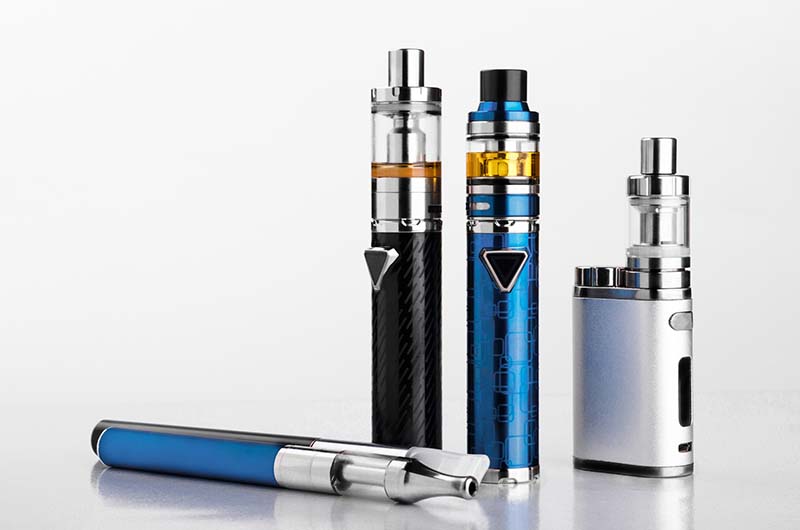Teens targeted by e-cig industry on new path to nicotine addiction

E-cigarette use among young people in the United States is on the rise, spurring efforts to stop the spread of these trendy yet dangerous tobacco products.
Youths in the U.S. use e-cigarettes, or vapes, more than any other tobacco product. Nearly 6% of middle and high school students used e-cigarettes this year, according to the Centers for Disease Control and Prevention.
Combatting tobacco industry marketing aimed at teens is a challenge for health officials, who point out that e-cigarettes present new avenues for nicotine addiction, said Aruni Bhatnagar, PhD, co-director of the American Heart Association Tobacco Center for Regulatory Science.
“No matter in what form, nicotine is a very addictive, very harmful substance,” said Bhatnagar, who is also a professor of medicine and a professor of biochemistry and molecular biology at the University of Louisville.
Youth appeal
Nearly 90% of smokers first try a tobacco product by age 18. If someone hasn’t started using tobacco by age 26, they are likely to never start. Reaching people at a young age to prevent tobacco use is key.
Vaping devices are considered cool or new age by many kids who get drawn in to using them, Bhatnagar said.
Electronic cigarettes, a type of electronic nicotine delivery device, are battery-powered and contain a liquid that becomes aerosolized when heated, providing nicotine to users with less irritation than traditional combustible cigarettes. The amount of nicotine delivered by e-cigarettes is comparable to or greater than that of combustible cigarettes, Bhatnagar noted.
E-cigarettes typically include flavorings, such as bubblegum or blueberry . The available flavors number in the thousands and are “a major driver” in vaping popularity among teens, Bhatnagar said.
Tobacco companies target young people with advertising and price discounts. New types and brands of vape devices come out continually. JUUL was a leader in the marketplace, but Bhatnagar pointed out that Zen, Mr. Fog and disposables are now some of the most widely used vape products.
Nicotine’s addiction danger
“It is, right now, a very difficult situation,” Bhatnagar warned, adding that in some cases, kids become so addicted they wake up at 4 a.m. to vape.
Most youths who vape want to quit, however, there are no U.S. Food and Drug Administration-approved treatments for kids, such smoking-cessation medications or nicotine-replacement therapies that are approved for adults, he said. Therefore, health care professionals must rely on counseling and peer-to-peer approaches with young people.
E-cigarettes were initially marketed as devices to help some adult smokers transition away from combustible cigarettes, though tobacco companies also moved toward vigorously marketing to young people, creating “this epidemic of addiction,” Bhatnagar said.
“Now we have this whole generation of kids addicted to nicotine that went unchecked. The tobacco companies found that opening,” said Bhatnagar.
What can be done?
A 2019 AHA presidential advisory paper chaired by Bhatnagar on new and emerging tobacco products stated that their regulation, control and prevention are part of the nicotine “endgame.”
The AHA’s “Tobacco Endgame” calls for a path to ending tobacco use and nicotine addiction in the United States. The AHA acknowledges that the ultimate endgame would be an end to all tobacco and nicotine addiction, but the association supports first ending the use of all combustible tobacco products while ensuring that other products do not addict the next generation of youth and adolescents and achieving a realistic goal of getting to less than 5% tobacco use prevalence.
Talking with teens about the dangers of tobacco and nicotine is helpful, Bhatnagar said. Doctors and families can try to monitor kids’ use of the products and offer them “non-stigmatized, non-judgmental support and advice,” he added.
The AHA provides resources for health care professionals to talk with patients about tobacco. Follow-up questions are important with teens because many don’t think of vaping as using tobacco, Bhatnagar said.
New awareness campaigns are being explored to help prevent youth vaping. They’re not necessarily “radically new” approaches, but different ways of offering social support, sometimes through technology, such as cellphone messaging or virtual reality, Bhatnagar said.
The idea is to let young people know they are not alone – and that they can leave nicotine behind.
Recalling and paraphrasing the words of a recent speaker he heard discussing addiction, he explained: “The opposite of addiction is belonging.”





